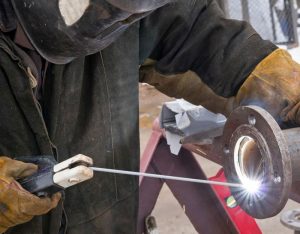Stainless steel is a highly durable metal used for various purposes. Not only is stainless steel a strong material for construction projects, but it also has increased resistance properties with increased protection against corrosion. All this translates to enhanced durability and an increased lifespan of stainless steel.
Stainless steel is unique and resistant to corrosion due to the addition of chromium. Chromium forms a tough, invisible, adherent film on the steel surface. The welding process for stainless steel depends on various factors, including its thickness and finishing goals.
Although companies use various stainless steel welding methods, the most common ones in Australia are TIG welding, resistance welding, and MIG welding. Today’s article will discuss these three methods, allowing you to understand the basic concept and choose the one that best fits your needs. Read on!
TIG Welding
TIG welding is a sophisticated method that offers numerous benefits, including quality, longevity, and versatility. Stainless steel is an ideal material for using TIG welding. The process involves creating a low heat input, making it perfect for stainless steel.
Depending on the project’s requirements, the welder mixes the argon gas with other gases, including nitrogen, hydrogen, or helium. It is crucial to use a single-sided welding process to increase resistance to corrosion and prevent the risk of oxidation.
Resistance Welding
 Resistance welding is another common method used for working on stainless steel material. Resistance welding, also known as spot welding, is the most affordable type of welding. Not only are the equipment and tools used in the process versatile, but they are also economical enough, making it an ideal choice for projects of varying sizes.
Resistance welding is another common method used for working on stainless steel material. Resistance welding, also known as spot welding, is the most affordable type of welding. Not only are the equipment and tools used in the process versatile, but they are also economical enough, making it an ideal choice for projects of varying sizes.
Besides, resistance welding requires the welder to use an electrical current to heat the edges of the frayed material and seal them together. Remember, this welding method is high productivity and reliable for stainless steel because it uses a low melting point. You can also tailor it according to your needs. The purpose is to prevent stainless steel distortion.
MIG Welding
It is a semi-automatic process commonly used to join stainless steel pieces. The process involves using a shielding gas with a higher quantity of argon and a solid wire electrode. Most welders in Australia prefer this method because it uses a pulsed current supply, making it easier to weld hard-to-reach and tough-to-weld spots on stainless steel material.
Sometimes, MIG welding also involves using a combination of gases, such as carbon dioxide, oxygen, and helium. The primary objective of using a mixture of gases is to stabilize the arc and improve the welding quality.
Final Words
There are various types of welding methods used for stainless steel welding. However, the ones given above are the most common. Choosing among these three methods depends on the quality you want to achieve. For instance, we recommend using resistance welding if you are on a budget. On the other hand, if the stainless steel you are working on is thin, you can use TIG welding.
This post was brought to you by steel fabrication Sydney
